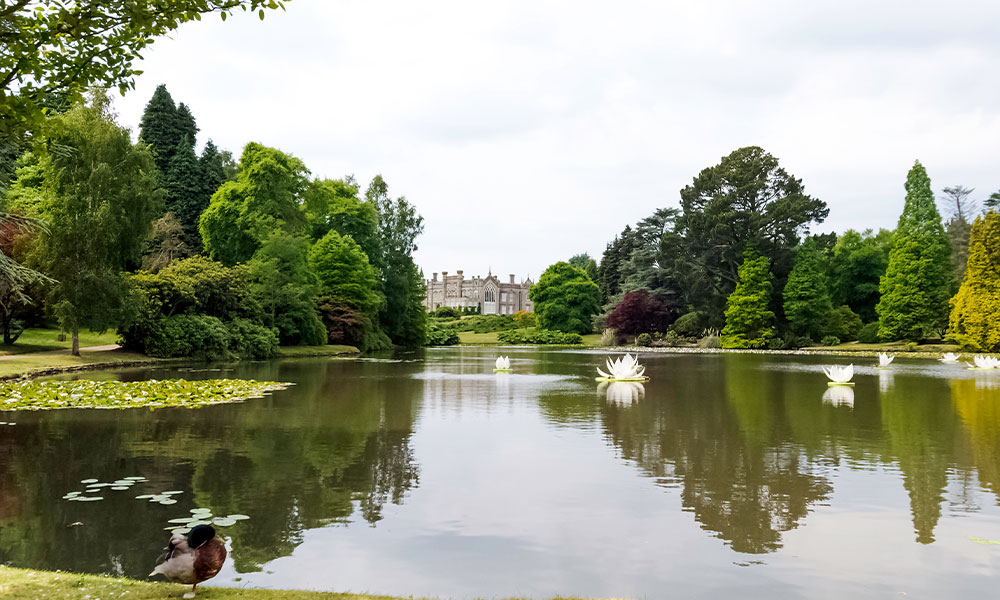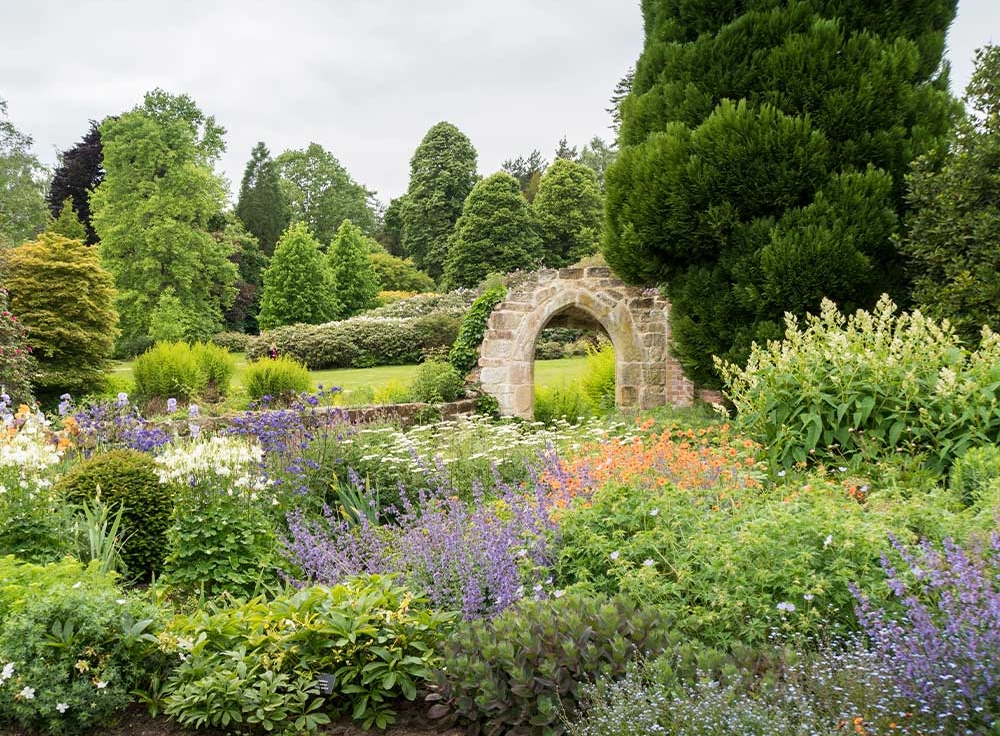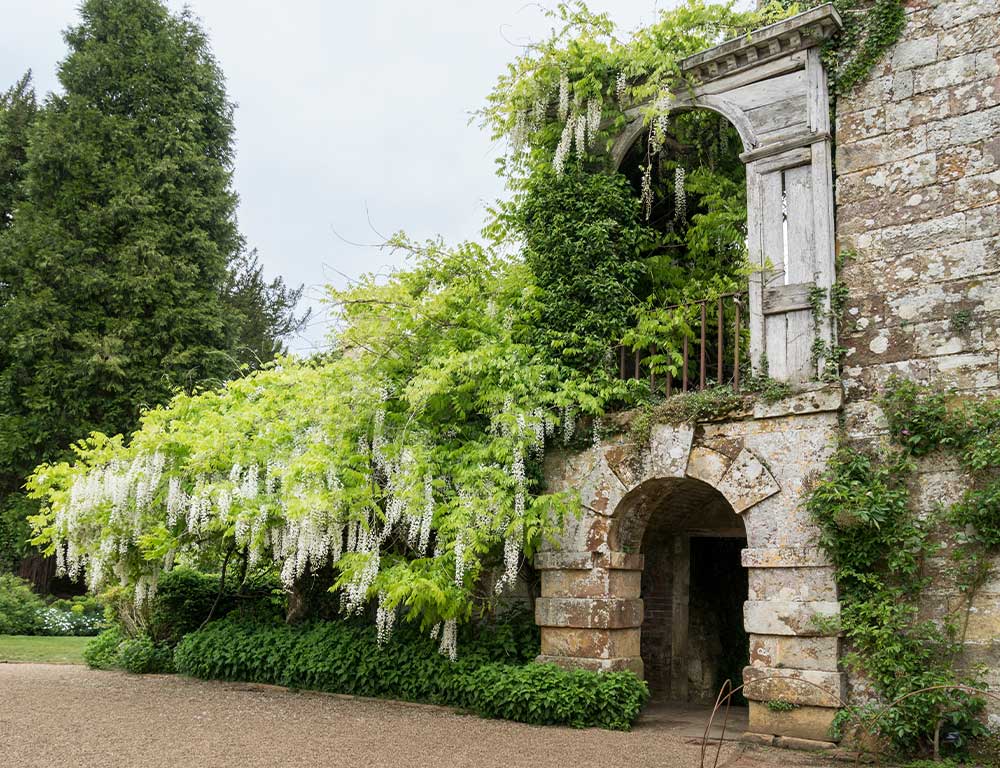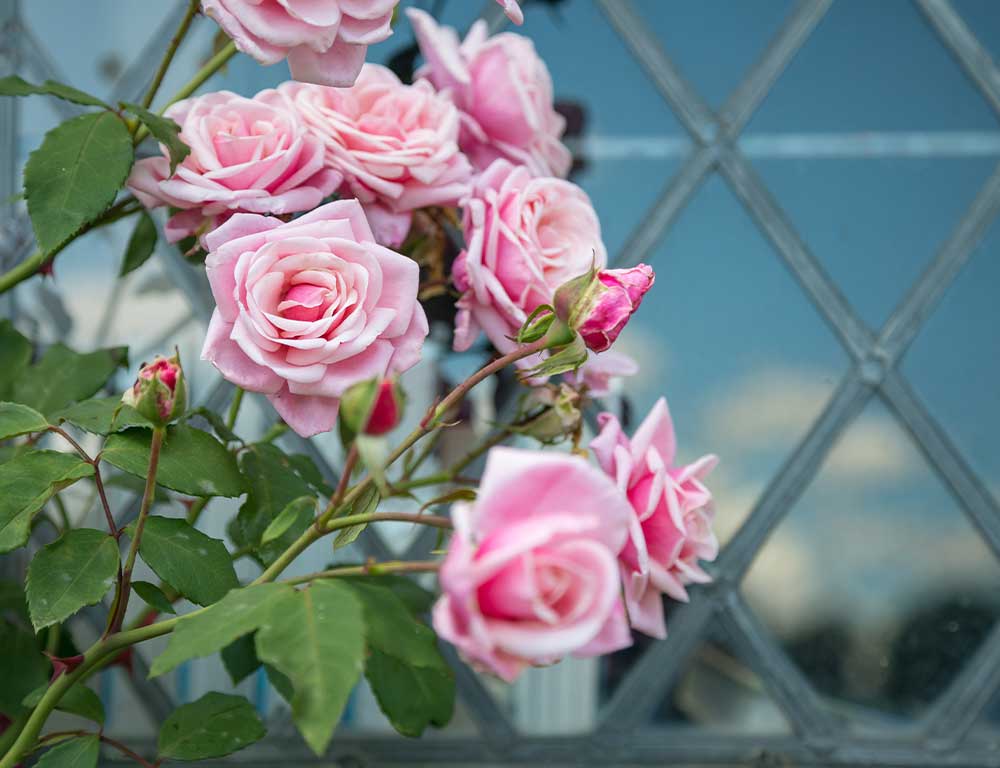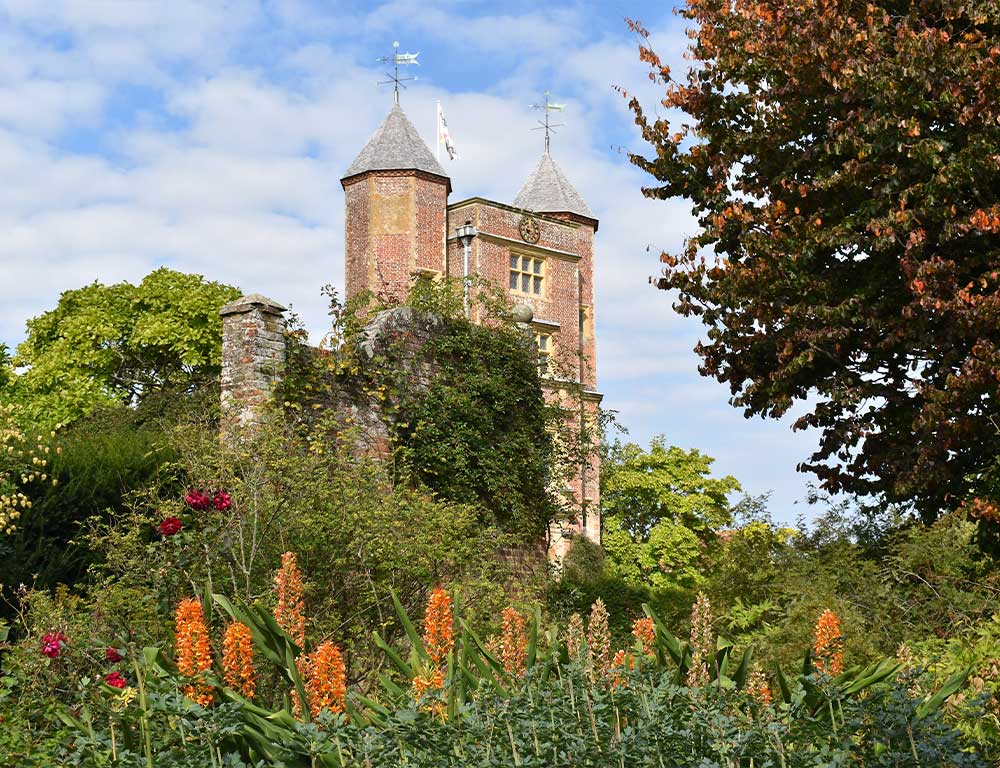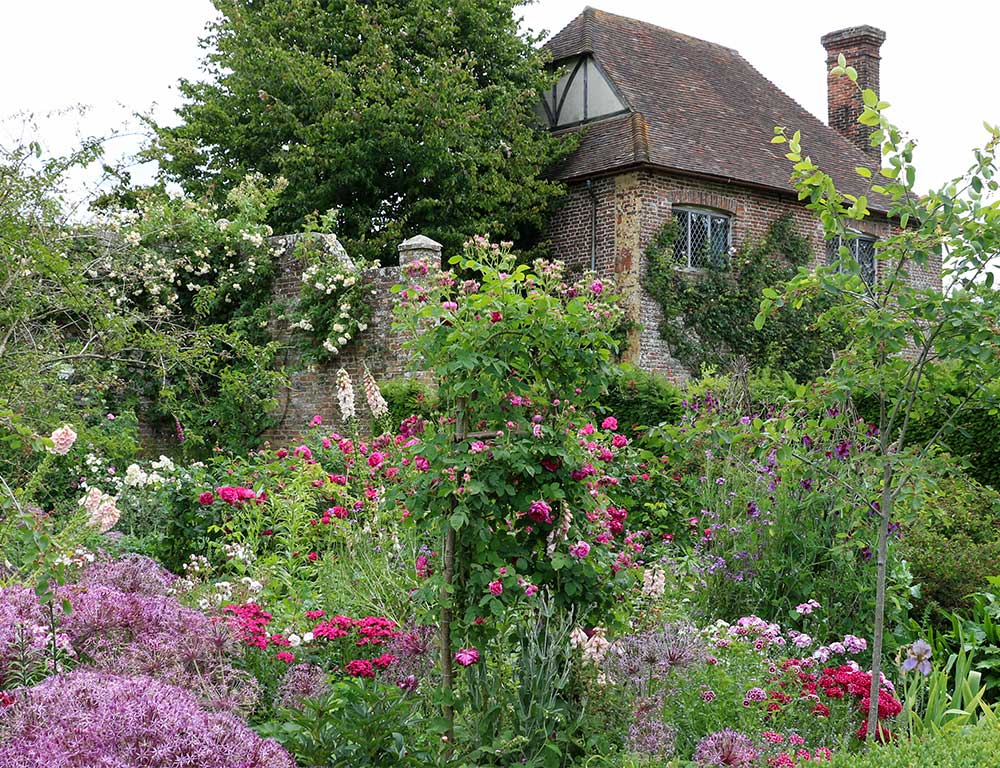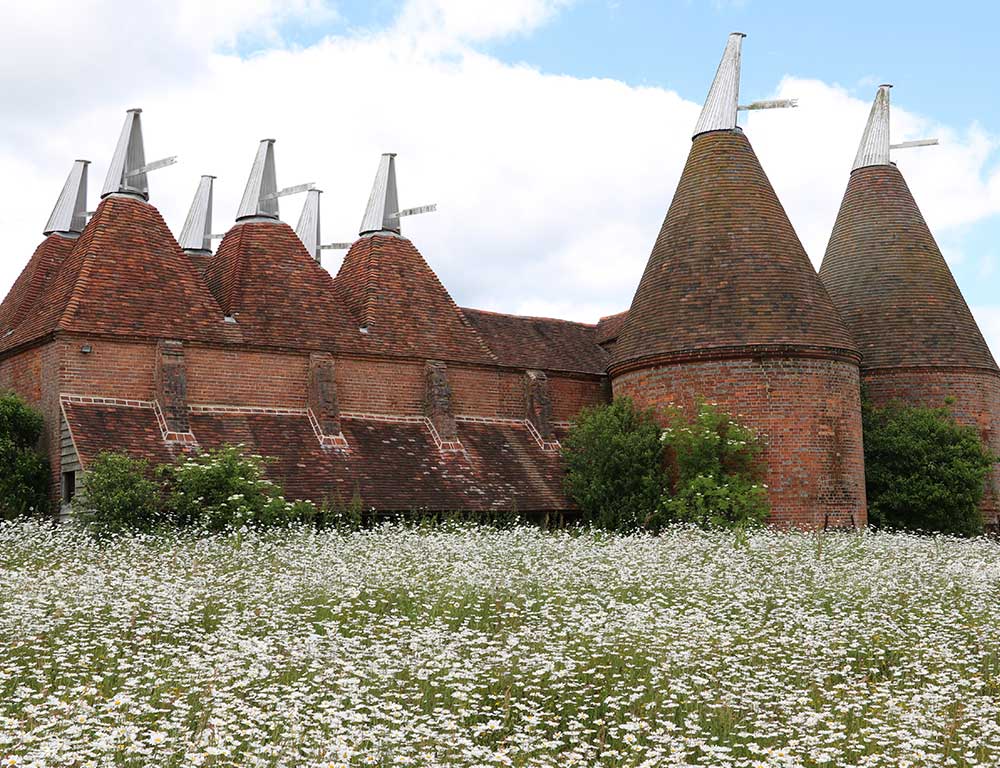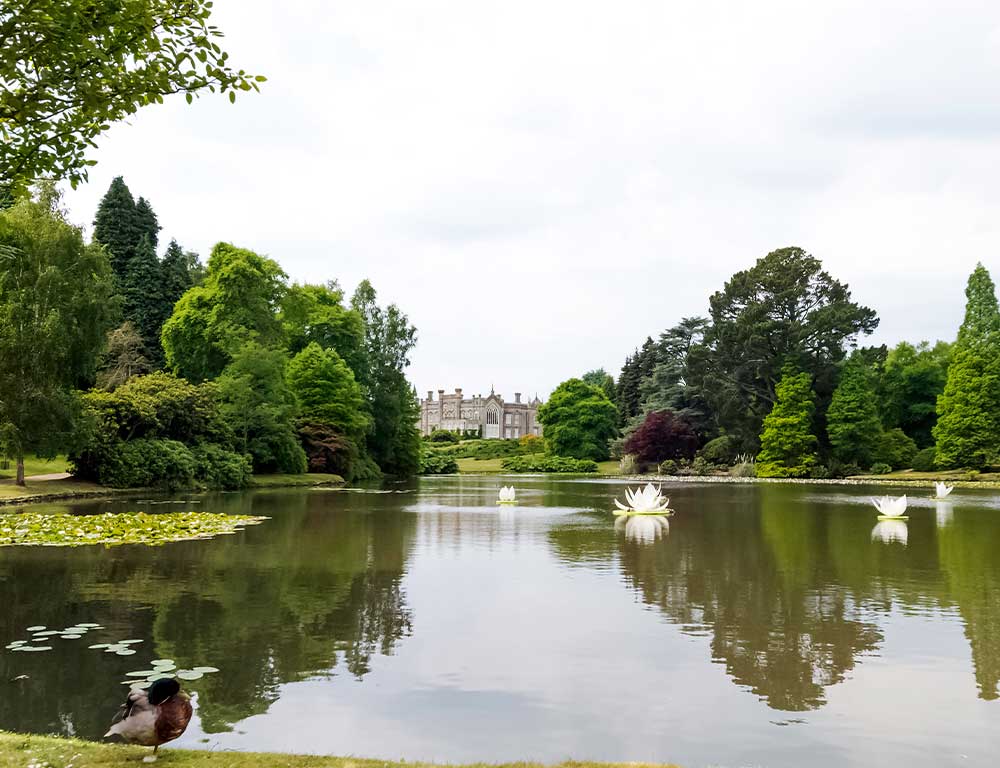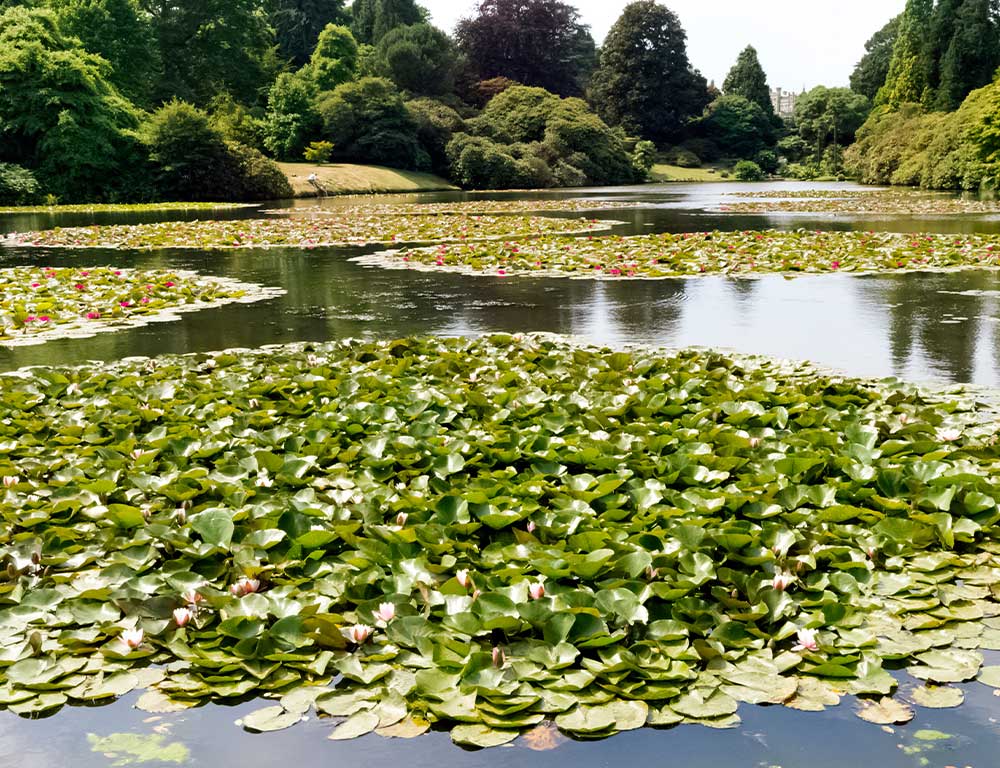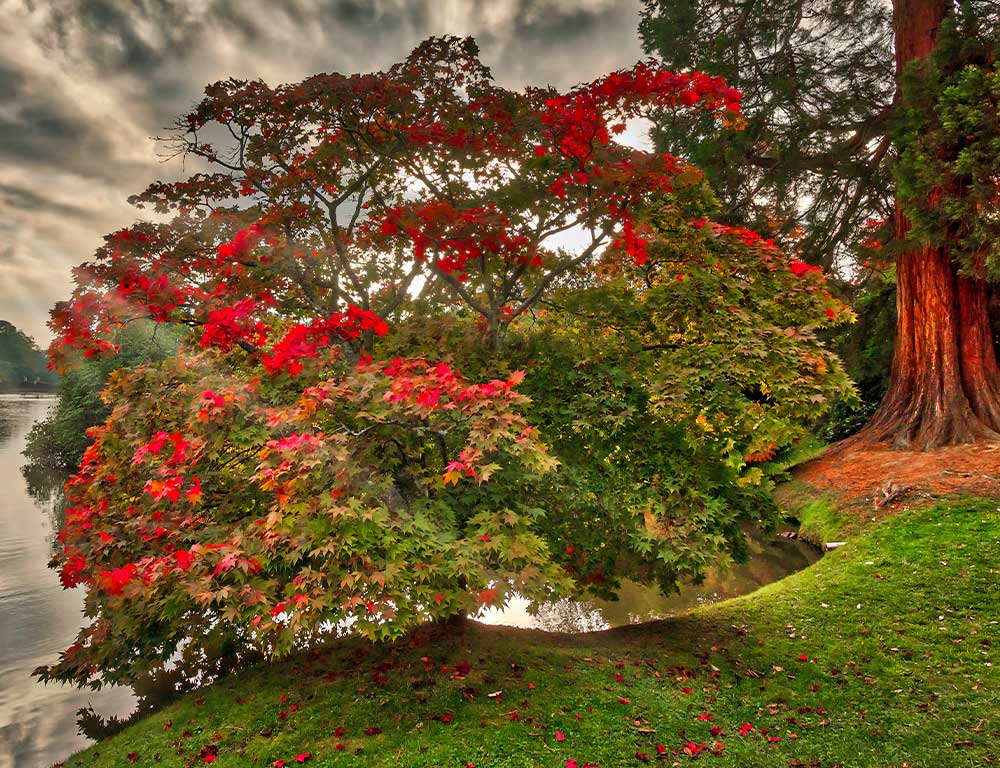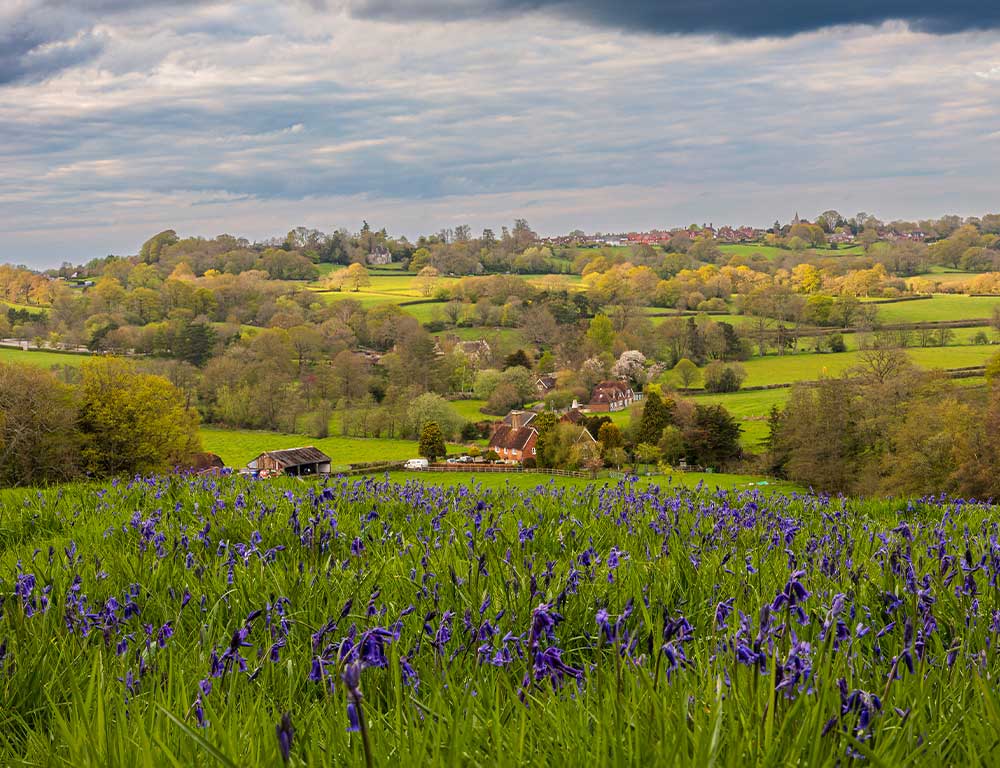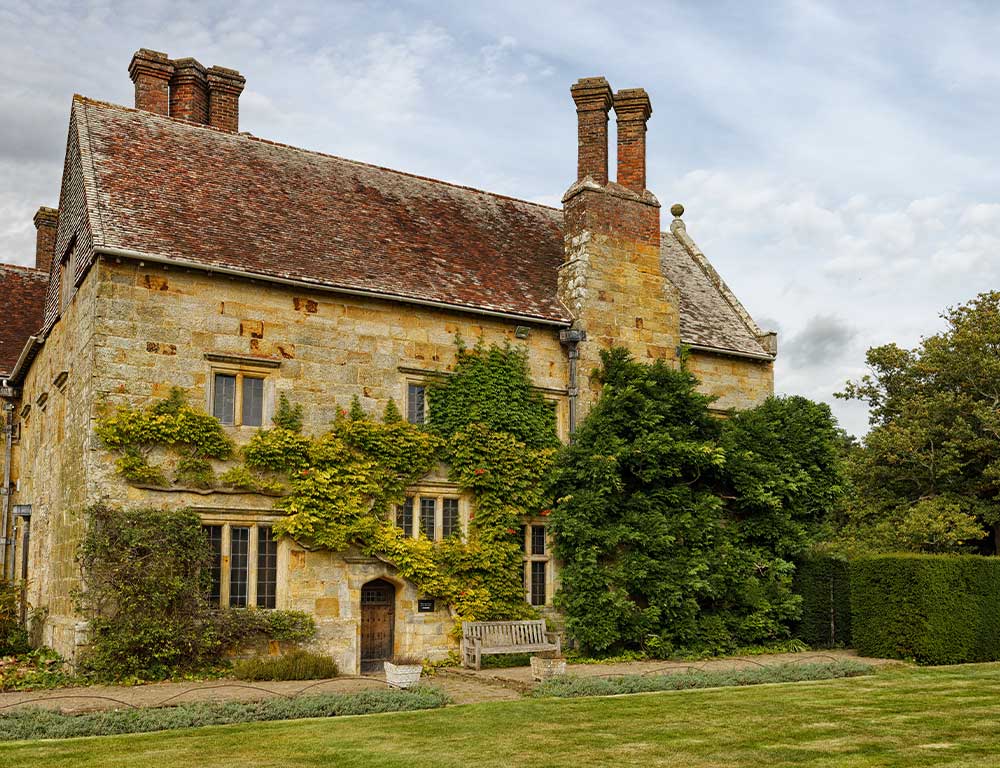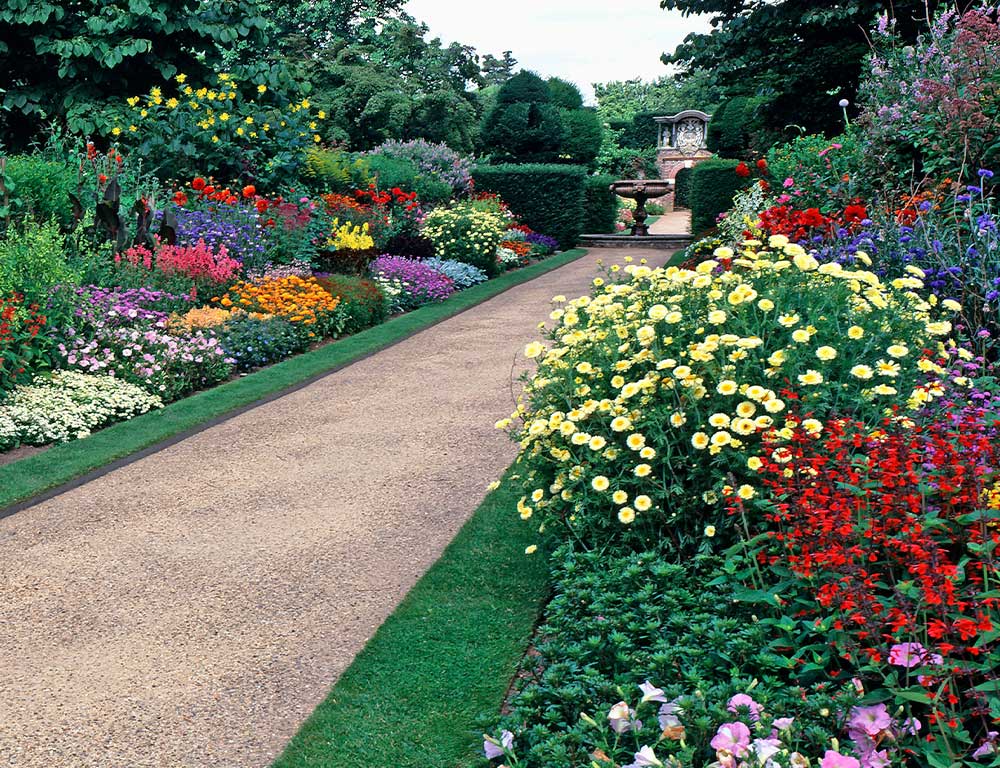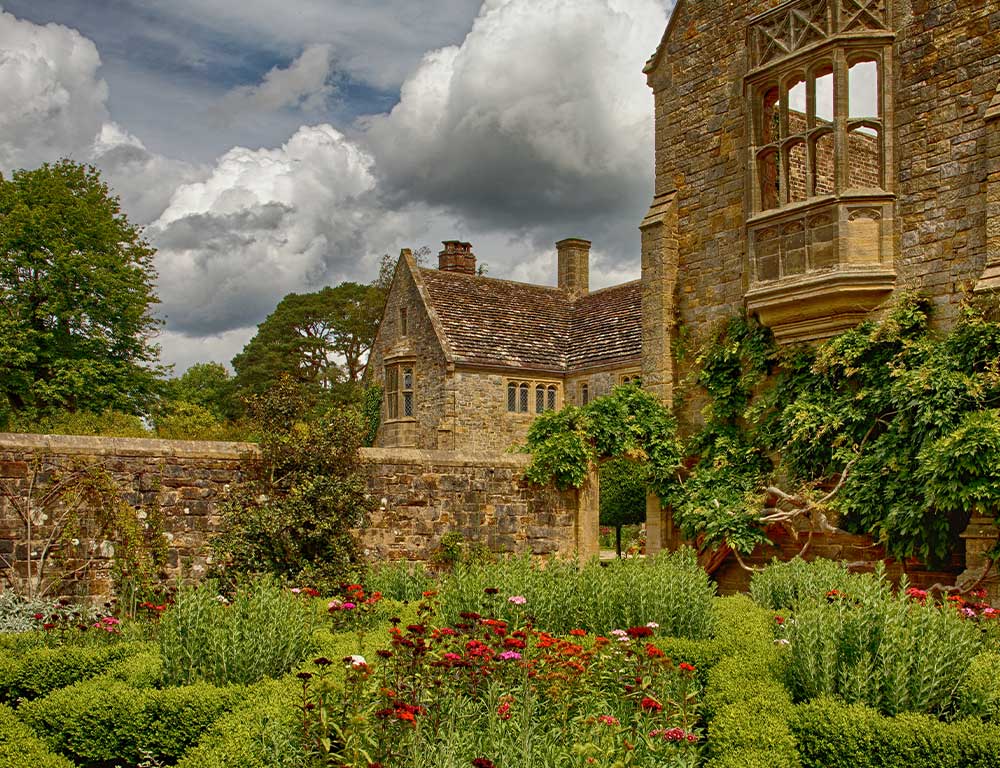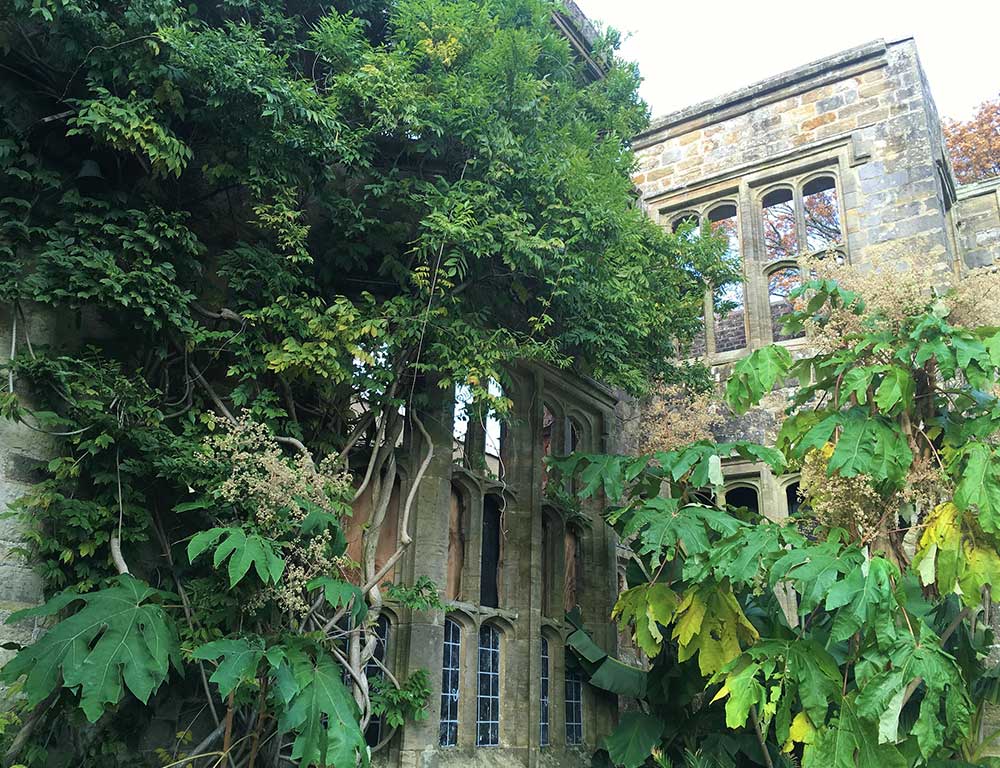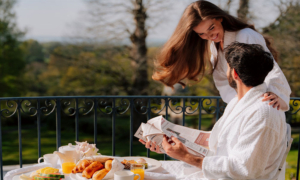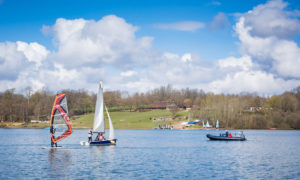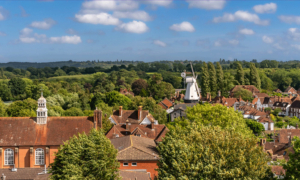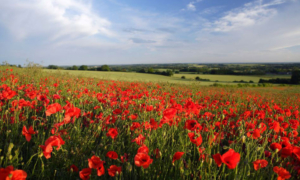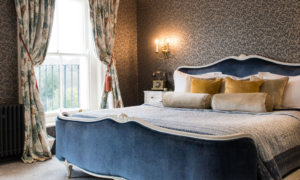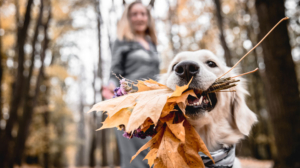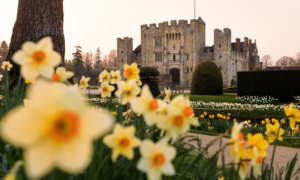Step back in time at Scotney Castle, where a romantic, ruined medieval castle sits within a picturesque garden full of hidden surprises and breathtaking vistas. At Sissinghurst Castle Garden, wander through vibrant “garden rooms” brimming with colourful blooms, each a testament to the creative vision of famed writer Vita Sackville-West.
Whether you’re captivated by formal borders, woodland walks, or sweeping parklands, the National Trust gardens around Tunbridge Wells promise a delightful escape into the heart of England’s natural beauty.
Scotney Castle, Lamberhurst
This enchanting garden combines history and nature. Its centerpiece, the old castle ruins, is adorned with vibrant flowers like rhododendrons, azaleas, and wisteria climbing its walls. The moat features tranquil water lilies, while diverse plants thrive on its banks. The garden’s beauty extends throughout the year: from early spring’s snowdrops and daffodils to summer’s fragrant roses and wisteria, and finally, to autumn’s stunning display of foliage in fiery hues.
Did you know that Scotney has the only working hop farm in the National Trust? The hops are used to produce Scotney Ale and Scotney Bitter. Why not visit the shop and pick up a bottle or two to take home with you as a memento of a great day out.
Sissinghurst Castle Gardens, near Cranbrook
These renowned gardens – a series of outdoor ‘rooms’ set around a moated Tudor manor – were created by novelist and poet Vita Sackville-West and her husband, writer and diplomat Harold Nicholson, in the 1930s. The old walls and scattered buildings were used as a framework for the gardens with their colourful floral displays. They are much emulated and continue to inspire gardeners today.
Spring is spectacular with an abundance of bulbs of all colours; the beauty of the famous white garden comes into its own in the summer together with the glorious scent from the old varieties of shrub roses. The cottage garden is awash with plants of flamboyant colour consisting of fiery reds, oranges and brilliant yellows.
Sheffield Park, Uckfield (near the Bluebell Railway)
Capability Brown planned these gardens for the Earl of Sheffield in 1776 and they were further developed in the early 20th century.
In spring the drifts of daffodils and bluebells are followed by rhododendrons and azaleas with their bright hues. The four lakes of this garden are surrounded by impressive trees and shrubs that crowd the banks of the lakes. In the summer the lakes are adorned with elegant water lilies in pink, white and yellow. In the autumn the spectacular maples, scarlet oaks and a variety of other trees explode into colour.
These stunning gardens and surrounding parkland are a place of beauty and hidden delight in all seasons.
Bateman’s, Burwash
The spirit of the Edwardian period pervades these tranquil gardens that surround the 17th century Wealden ironmaster’s house, bought by the author and poet Rudyard Kipling. The attractive garden in which he took so much delight remains much as it was in his time.
The gardens are a mixture of formal and informal styles with a rose garden with flagged paths, orchard, and walled kitchen garden bound by a herb border.
Elements of the great writer’s original plans include the formal lawns surrounding a reflecting pool and the sheltered Mulberry Garden. The grassy meadows lead to a watermill and farmland walks.
The garden and surrounding countryside inspired his stories and poems, especially Puck of Pook’s Hill and Rewards and Fairies.
Nymans, near Haywards Heath
When Ludwig Messel bought the 600 acre estate in 1890 then began the creation of one of the most important gardens in horticulture.
Partially destroyed by fire in the 1940’s, the remaining house and ruins are covered with climbing plants such as clematis and wisteria.
Messel started to restore the walled gardens where the summer borders are a riot of annual and perennial colour. He used many new plants from South America and was happily involved in cultivating new breeds.
The rose garden was restored in 1987 and planted with more than 150 old fashioned roses. The scent of the roses lets you know that summer is really here.
The garden is at its peak in the summer and is followed in the autumn by the magnificent colour of the natural woodland.


